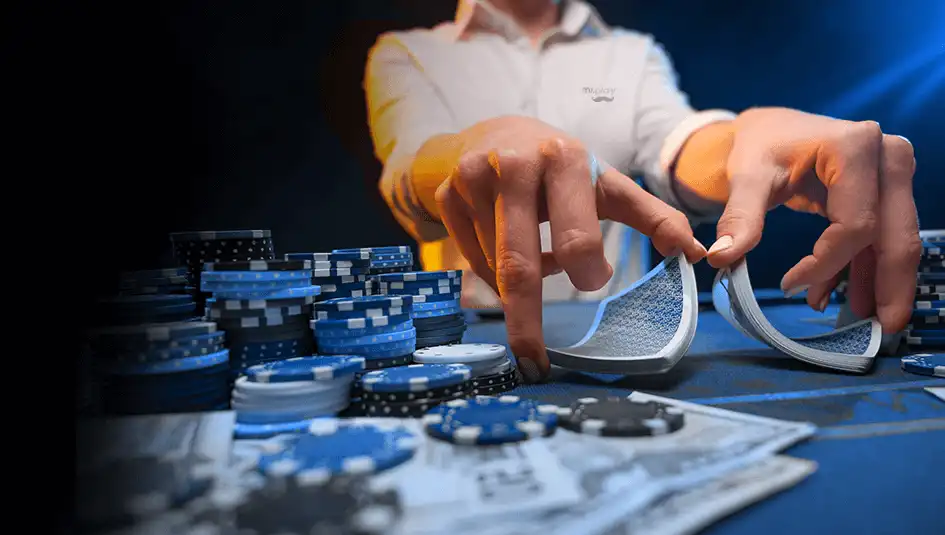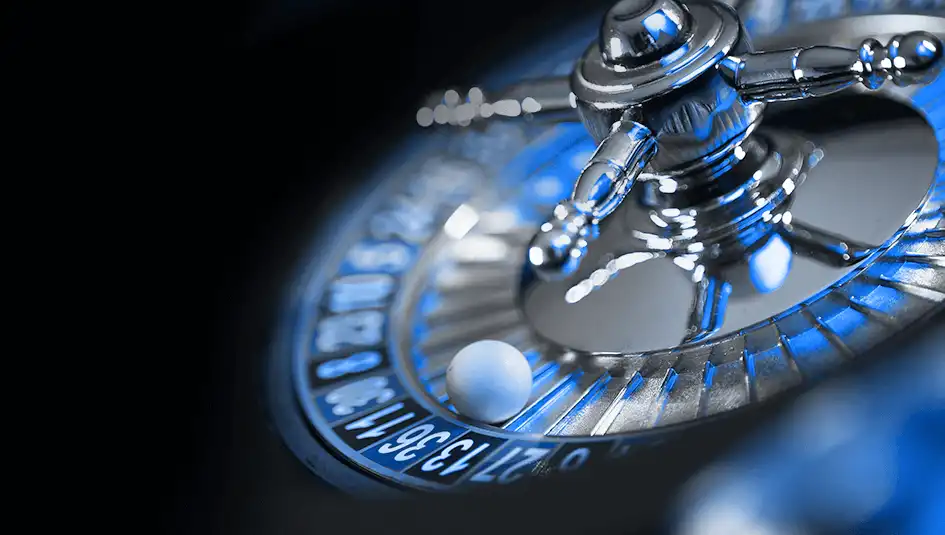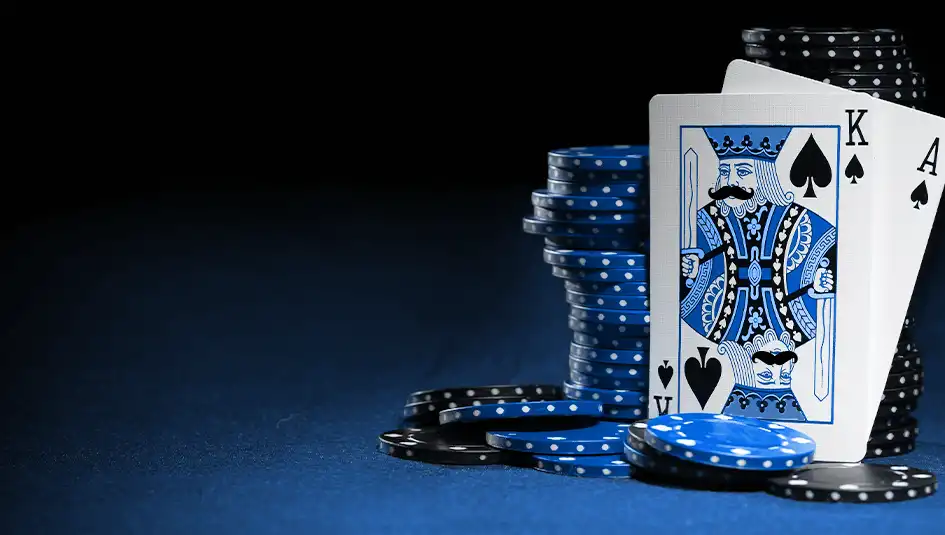An Introduction to Blackjack Switch
Blackjack Switch is a hugely enjoyable Blackjack variant that introduces a major change to the rules that requires players to rethink the entire way that the game is played. The player is always dealt two hands and after all cards have been dealt, players are able to switch the top two cards between each hand. For example, if one hand has K and 8 and the other hand has 3 and A, then the A and 8 can be switched to form one hand of Blackjack and another hand of 11, which can then be played as a regular hand.
Blackjack is known for having a very small house edge but this small change to the rules reduces it even further, from around 0.5% to 0.10%! As a result, it is a hugely attractive game and one that is well worth spending some time getting to know the ins and outs of. Of course, the rules compensate for this advantage in some ways, but it still means that when following proper strategy you have a better chance of winning.
How to Play Blackjack Switch
In most ways, Blackjack Switch follows the standard rules of the game. The game is played with 6 decks of cards that are shuffled into a shoe and the aim of the game is to beat the dealer by building hands that have a value closer to 21 than the dealer’s hand, but without exceeding 21.
The game uses the standard Blackjack card values, Aces are worth 1 or 11, face cards (Jack, Queen and King) are worth 10, and the number cards are worth their face values. This means that the best hand consists of just two cards, and Ace and a ten card. It is worth exactly 21 and the hand is known as Blackjack.
After placing your bets, the cards are dealt. You receive two face up cards to each of the hand positions and the dealer receives one face up and one face down. You then play each hand in turn, but before beginning, you have the option to Switch, to exchange the top two cards of each hand.
After deciding whether or not to Switch you have the standard decisions to make for each hand:
- Stand – The hand remains as is and play moves to the next hand or the dealer.
- Hit – The hand receives another card, if it doesn’t bust then you may Hit or Stand again.
- Double – This doubles your bet, you will receive one more card to that hand, and then the hand stands.
There are situations that arise where you will have further options.
- Split – If the first two cards in a hand have the same value then they can be Split into two hands. The bet will be doubled and the two hands played independently. If two aces are split then you will receive just one more card to each hand. It is also possible to Double after splitting.
- Insurance – If the dealer’s face up card is an ace, you can take out Insurance against the dealer having Blackjack. Insurance costs half of the original bet and it pays out if the dealer has Blackjack.
When you have finished playing your hands the dealer will play. The dealer will stand on hard 17s and hit on soft 17s. A hand is considered hard if it does not contain an Ace.
When the dealer has finished you will be paid at 1:1 as long as your hand is closer to 21 than the dealer’s is. If your hand has the same value as the dealer’s hand then your bet is returned as a push. Importantly, in Blackjack Switch, if the dealer has 22 then your bet is returned as a push rather than winning, unless you have Blackjack, in which case you win.
Blackjack Switch Basic Strategy
The trick to mastering Blackjack Switch is knowing when you should switch. There are some cases where it is very obvious, such as the above example where switching will form Blackjack. However, it is not always obvious and this is where some basic strategy tips can be helpful.
The first thing to do is decide whether the dealer’s face up card is Strong, Weak or Deuce. A strong card is anything from 7 up to Ace, a weak card is anything from 3 to 6, and a Deuce is any 2.
After deciding on the dealer’s card, you then need to decide which type of hands you have. There are four types, Winner, Loser, Push and Chance. When defining these hands, it is always assumed that the dealer’s facedown card is a 10 and that any player hand that needs a hit will receive a 10.
A Winner hand is Blackjack or any hard or soft total from 18 to 20 that beats the dealer’s total (assuming a facedown 10). Winner hands are also player totals of 8 to 11 that beats the dealer’s face up card, such as a player 8 against a dealer 5. A pair that can be split is only a Winner if each of the split cards qualify as Winners against the dealer’s face-up card. Finally, the only player hands that qualify as Winners when a dealer has 2 are 10, 11, 19, 20, and 21. This is because the dealer’s 2 will not bust as often in Blackjack Switch as it does in regular Blackjack.
A loser hand is any player hand that is beaten by the dealer’s Strong face-up card (7 to A) (e.g. 19 vs 10)
A Push is a player hand from 18 to 20 or from 8 to 11 that would push the dealer’s Strong face-up card (e.g. 19 vs 9 or 8-8 vs 8).
A Chance is any player soft or hard hand with a total of 3 to 7 or 12 to 17 against a deal face-up card from 2-6. In other words, a Chance hand is a hand where your cards are weak, but so is the dealer’s total.
A simplified way of thinking about it is as follows. If the dealer has a 10 as a facedown card, if the player needs to hit and draws a 10, then will that hand win, lose or push. The only exception is that the dealer 2 is assumed stronger than the other low face-up cards and that a player 7 or 17 is never considered a Winner or a Push.
Unsurprisingly, the hands you want to hold ranked from best to worst are Winner, Push, Chance, Loser.
The classification may seem a little complex at first, you will always have two hands in play and need to classify them against the dealer’s face-up card, and then also switch the top cards and classify your other two potential hands. For example, Player Hands 10-7 and 6-9 vs Dealer Face-Up 8. Both hands are Losers (17 and 15 vs 8). When switched you have 10-9 and 6-7, which means you then have a Winner and a Loser, so making the switch is a massive advantage.
There are in fact just nine different combinations of these hands possible. Here they are ranked from best to worst:
- Winner/Winner
- Winner/Push
- Winner/Chance
- Winner/Loser
- Push/Push
- Push/Loser
- Chance/Chance
- Chance/Loser
- Loser/Loser
Example Hands
Player Hands: 10-A and 9-10 – Dealer Face-Up: 9
The player has Blackjack and 19 against a 9, this is a Winner/Push scenario. If you switch you will have 10-10 and 9-A against 9, which is Winner/Winner. In other words, sometimes it is best to switch from Blackjack as in this version of Blackjack, all winning hands pay the same.
Player Hands: 10-A and 9-10 – Dealer Face-Up: 10
In this case, the dealer has a 10, which makes your hands Winner/Loser. If you switch it will become Push/Push but as Winner/Loser beats Push/Push in the list above, then you would not switch.
Other Scenarios
There may be instances when switching does not change the ranking of the hands. However, this does not mean that one is not better than the other.
Sometimes you may want to switch a Chance/Chance for another chance/Chance. This is because it is better to have a hand that you can take action on than a hand that you can’t. For example, if you have two 13s vs a dealer 3 and the option to turn them into a 12 and a 14 then you should switch. This is because according to the Blackjack strategy tables, you should stand on 13s while with a 12 and a 14 you would stand on the 14 but hit the 12. This means that you have a chance of improving one of the hands.
You may also want to switch a Loser/Loser for another Loser/Loser. The concept is very similar. If you have two loser hands that you cannot take any action on but the chance to change it for one hand that you can take action on then it is worth switching.
There are also circumstances when it is beneficial to switch a Winner/Winner for another Winner/Winner. If you can make one of the Winners stronger against a Strong dealer face-up card then you should switch. For example, player has A-9 and 10-8 vs dealer face-up 7. After a switch the player has 19 and 19 vs 7, which is an improvement of the weaker Winner hand from before the switch.
You may also want to switch from a Winner/Chance to another Winner/Chance if it will make one Winner stronger versus any Weak dealer face-up card or 2. For example, if the player has an 18 and a 14 versus a dealer 6. This is classified as Winner/Chance. By switching, the player hands become a 19 and 13, still a Winner/Chance set. The switch should be carried out to make the Winner a stronger Winner. Remember that a chance hand only wins if the dealer busts, so a 13 and 14 versus a 6 are virtually identical hands. Totals of 18 and 19, on the other hand, are not identical. A 19 will beat more dealer hands.
Finally, there are two exceptions to the rules on switching that apply when you have a Blackjack or can make one. First, if the dealer has a face-up card from 2 to 6 then always keep a Blackjack or switch to make one. Second, if the dealer has a Strong face-up card (7 to A), never switch from a Blackjack unless it raises the strength of the two hand set according to the listing above. In particular, ignore the rule about making a weaker Winner into a stronger Winner if you must give up a Blackjack to do so.
While this may sound slightly complicated at first, it actually takes very little time to get the hang of and you will be improving your Blackjack Switch play in no time at all. Sign up for your mr.play Casino account today, claim your welcome bonus and you can then start playing Blackjack Switch straightaway.

 A Beginner’s Guide to French Roulette
A Beginner’s Guide to French Roulette A Beginner’s Guide to Blackjack Double Exposure
A Beginner’s Guide to Blackjack Double Exposure